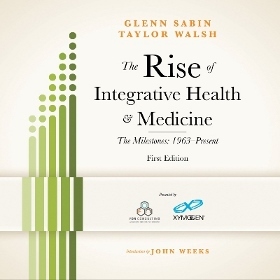Fee-Splitting 101 for MDs and other Integrative Health Practitioners

Is it fee-splitting to hire another medical doctor, chiropractor, acupuncturist, or other health care practitioner in your office and give them a “cut” of patient revenues? Fee-splitting, “Stark,” self-referral, and anti-kickback issues concern many health care practitioners who seek legal counsel from our law firm.
Here’s one typical scenario:
You’re an acupuncturist and you want to hire a second acupuncturist as an independent contractor. The patient pays you $100 for the session and you give the second acupuncturist, who is actually performing the acupuncture needling session, 40%.
Problem?
It depends.
Let’s assume this scenario arises for a clinical health care practitioner for a service that is not covered by Medicare or Medicaid. That way, we do not have to deal with federal (such as Stark and federal anti-kickback law), and only have to analyze state law. Let’s also review this scenario from the perspective of California law.
Several provisions of California law address self-referral, kickbacks, and fee-splitting. Let’s dive in to some specific legal rules.
California’s Healthcare Anti-Kickback and Fee-Splitting Laws
California Business & Professions Code 650 (“B&P 650”) looms over any discussion of arrangements that might be considered kickbacks or fee-splitting. B&P 650 provides:
(a) …. the offer, delivery, receipt, or acceptance by any person licensed under this division or the Chiropractic Initiative Act of any rebate, refund, commission, preference, patronage dividend, discount, or other consideration, whether in the form of money or otherwise, as compensation or inducement for referring patients, clients, or customers to any person, irrespective of any membership, proprietary interest, or co-ownership in or with any person to whom these patients, clients, or customers are referred is unlawful.
(b) The payment or receipt of consideration for services other than the referral of patients which is based on a percentage of gross revenue or similar type of contractual arrangement shall not be unlawful if the consideration is commensurate with the value of the services furnished or with the fair rental value of any premises or equipment leased or provided by the recipient to the payer
California’s anti-kickback law does not require intent to refer patients. No showing of increased patient costs is required, regardless of how fees are characterized, nor is it necessary to find a physician-patient relationship in order for there to be a violation.
Enjoying this article? Subscribe and get our latest, delivered straight to your inbox.
California anti-kickback law is broader than the federal prohibitions (i.e., under federal anti-kickback law), as California law includes not only goods and services billed under Medicare and Medicaid, but also those billed under private insurance payer services and workers compensation. (Note that California also contains self-referral prohibitions in a statute known as PORA–the Physician Ownership and Referral Act–which parallel some of the federal Stark law prohibitions).
Section 650(b) is often used to justify payment of the management fee based on a percentage of gross revenues at fair market value—i.e., the management services organization (MSO) model.
Additional California Anti-Kickback and Fee-Splitting Provisions
California law contains some other anti-kickback and fee-splitting laws in addition to California Business & Professions Code 650. For example:
- California Welfare and Institutions Code Section 14107.2 prohibits kickbacks in the context of public health services such as Medicaid and Medi-Cal. However, Section 14107.2(c) provides that the prohibitions in 14107.2(a) do not apply to: “Any amount paid by an employer to an employee, who has a bona fide relationship with that employer, for employment with provision of covered items or services.”
- California Business & Professions Code, Section 2273(a) states: “Except as otherwise allowed by law, the employment of runners, cappers, steerers, or other persons to procure patients constitutes unprofessional conduct.”
- California Health & Safety Code (“H&S”) Section 445 (“Medical Referral Services”), states: “No person, firm, partnership, association or corporation, or agent or employee thereof, shall for profit refer or recommend a person to a physician, hospital, health-related facility, or dispensary for any form of medical care or treatment of any ailment or physical condition.”
- There are additional prohibitions in the Knox-Keene Act applicable to health plans. With respect to professional corporations, California Corporations Code, section 13408.5 provides: “No professional corporation may be formed so as to cause any violation of law, or any applicable rules and regulations, relating to fee splitting, kickbacks, or other similar practices by physicians and surgeons or psychologists, including, but not limited to, Section 650 or subdivision (e) of Section 2960 of the Business and Professions Code. A violation of any such provisions shall be grounds for the suspension or revocation of the certificate of registration of the professional corporation. The Commissioner of Corporations or the Director of the Department of Managed Health Care may refer any suspected violation of such provisions to the governmental agency regulating the profession in which the corporation is, or proposes to be engaged.”
The bottom line is that referrals must not “be induced … by considerations other than the best interests of the patients” (i.e., by promise of financial remuneration).
Care must be taken in structuring the arrangement that it does not trigger enforcement red flags for either corporate practice of medicine (“CPM”), or self-referral and anti-kickback violations.
The corporate practice of medicine doctrine has to do with arrangements that regulators could regard as unlawful intrusion by administrative persons and entities into the clinical practice of medicine, psychology, and certain other licensed healthcare professions.
Bear in mind that state authorities (including California) will often look to federal law and regulations for precedent. When medical doctors and laypersons wish to enter into business together, they should be aware of federal scrutiny of these kinds of arrangements for illegal kickback or fee-splitting activity. Among other things, the federal Office of the Inspector General (OIG) has issued a fraud alert regarding joint ventures between physicians and other entities and individuals. OIG, Publication of OIG Special Fraud Alerts. Although the OIG Fraud Alert is concerned with physician investors, the OIG suggests elsewhere that its general principles should be used to “assess the risks associated with relationships with both physician and non-physician sources.”[2] The OIG’s “chief concern is that remuneration from a joint venture might be a disguised payment for past or future referrals to the venture or to one or more of its participants. Such remuneration may take a variety of forms, including dividends, profit distributions, or, with respect to contractual joint ventures, the economic benefit received under the terms of the operative contracts.” Id. Even if Medicare rules do not apply, the OIG fraud alert can still be influential with California authorities.
California – Attorney General Opinions About Healthcare Kickbacks and Fee-Splitting
Several California Attorney General opinions interpret the notion of “referral” for purposes of California Business & Professions Code 650 very broadly. These opinions may seem esoteric, but they address a variety of arrangements that require interpretation to see whether they constitute illegal healthcare kickbacks or fee-splitting..
Among these:
- Cal. Atty. Gen. Op. No. 00-1002 (February 1, 2001)[1]: The AG opined that California Business & Professions Code 650 prohibits chiropractors from participating in an Internet marketing plan in which they agree to promote the naturopathic products of an Internet company and to refer their patients to the company’s website in exchange for fees equaling 20 percent of the price of the products purchased by their patients from the company.
- Cal. Atty. Gen. Op. No. 99-611 (December 16, 1999)[2]: The AG opined that a physician may not enter into an agreement with a group of licensed and certified professionals to perform working hardening and rehabilitation services for patients, where the physician would control the scope of the services by prescription, obtain payment from a workers’ compensation insurance carrier for the services, and retain a portion of the fee after compensating the group. The AG determined that the physician would be receiving a “discount” from the group, and would be keeping a “rebate” in retaining a portion of the fee after compensating the group.
- Cal. Atty. Gen. Op. No. 98-611 (January 20, 1999)[3]: The AG opined that a corporate entity licensed as a health care service plan may not enter into an agreement with a network of providers of cosmetic medical services, a specialty not covered by any of the entity’s health benefit plans, according to the terms of which the entity would: (1) refer its enrollees to a participating provider, or to a provider selected by the enrollee from a directory of participating providers, for medical services at a discounted rate, and (2) collect and forward to the provider the fees for such services after deducting an “administrative fee.” The AG rejected the argument that B&P 650 would be inapplicable simply because the proposed arrangement would allow the enrollee to select from a list of professionals.
- Cal. Atty. Gen. Op. No. 93-807 (June 30, 1994)[4]: The AG opined that a podiatry referral service for profit may not direct callers on the following basis: (1) to a service subscriber who pays $500 monthly for a nonexclusive listing according to geographic proximity; (2) to a service subscriber who pays $750 monthly for a semi- exclusive listing within a five-mile radius; and (3) to a service subscriber who pays $1000 monthly for an exclusive listing within a five-mile radius, where the caller may, during the call, request and select an alternative referral. The AG concluded that the proposed referral plan for podiatrists “comes squarely under our 1982 dental referral opinion,” and that the legislative enactment of express authorization for dental referral services (B&P 650.2) and chiropractic referral services (B&P 650.3) is subject to “strict limitations,” and supports the conclusion that a referral plan for podiatrists violates B&P 650. The AG emphasized that the proposed plan would constitute “consideration … as compensation or inducement for referring patients” to the podiatrist.
- Cal. Atty. Gen. Op. No. 90-304 (October 25, 1990):[5] The AG opined that where a group of radiologists contracts with physicians to provide imaging services for the patients of the physicians, and the agreement provides that (1) the group will charge each patient a fee for the services, (2) the fees collected will be transmitted to the physicians, (3) the physicians will pay stipulated amounts to the group for the services, and (4) the total amounts paid by the physicians will be independent of but increase proportionately less than the total fees collected from the patients, performance of the agreement would violate California Business & Professions Code 650. The AG broke down B&P 650 into five elements: (1) An offer, delivery, receipt or acceptance (2) by any person licensed under this division (the healing arts provisions) (3) of consideration to any person (4) as compensation or inducement for (5) referral of patients, clients or customers. The AG also noted that: “With each referral, the referring physician will receive an economic benefit that is not based solely upon the imaging services rendered the patient. An increment of the consideration will be tied exclusively to the referral itself in that the physician will receive a proportionately greater share of the payments by increasing the number of referrals.
What does all this mean?
Kickbacks and fee-splitting are related, in that a “kickback” involves the payment to or from a physician (or, depending on the state, chiropractor, acupuncturist, nurse, other licensed healthcare practitioner) in exchange for a referral, while fee-splitting involves splitting the physician’s fee to the patient between the physician and a third-party. B&P 650 prohibits either/both.
So, for example:
When you charge the patient $100 for one chiropractic session, and pay the independent contractor chiropractor $40 for the session, this could appear to regulators as though you are splitting your fee of $100 with, and receiving a $40 kickback from, the independent contractor chiropractor as a reward for referring the patient to the chiropractor. This may violate California Business & Professions Code 650, and possibly other statues as well such as B&P 2273(a) (prohibition on steering patients).
What may start out as an economically advantageous situation becomes a potentially illegal fee-splitting or kickback arrangement.
The AG opinions are uniformly negative on arrangements that potentially constitute fee-splitting. This includes, among others cited: No. 00-1002 (prohibiting chiropractors from promoting online naturopathic products in exchange for a fee); No. 99-11 (prohibiting retention of a fee, from a workers’ compensation payment, in exchange for referring patients to clinicians); No. 93-807 (prohibiting a podiatry referral service for profit); and No. 90-304 (prohibiting payment of fees for referral for imaging services).
We’ve previously written a lot about how fee-splitting issues arise with medical spas and integrative medicine centers, and how medical spas, tattoo removal clinics, integrative care centers, and medical clinics that include nurses, aesthetic medicine, and operation of lasers can manage fee-splitting and anti-kickback issues. See, for example:
Use of lasers for body sculpting raises legal issues
California Self-Referral and Related Laws
Medical spas face fee splitting issues
Fee Splitting and Kickbacks continue to challenge physicians
The Mall Model: A Legal Structure to Handle Anti-Kickback Concerns of Integrative Care Centers
Some relevant California cases include the following:
- Defendant paid for “referrals,” in violation of California Business & Professions Code 650, in hiring marketers to hand out cards offering defendant’s services and drive patients to defendant’s office, and paying the marketers $20 for each referred patient who was qualified to enroll, and who did enroll, in the Family Planning Access Care and Treatment (Family PACT) or Child Health and Disability Prevention Program (CHDP), even though defendant did not pay for patients who were not qualified to enroll in those programs. People v. Guiamelon (App. 2 Dist. 2012) 140 Cal.Rptr.3d 584, 205 Cal.App.4th 383, review denied, certiorari denied 133 S.Ct. 547, 184 L.Ed.2d 343.
- Contract between medical doctor and lay hospital administrator whereby the administrator was to contact fellow hospital administrators on behalf of the medical doctor in an effort to persuade them to contract for their emergency room services with the medical doctor and under which the administrator was to receive $250 per month for each hospital client successfully referred by administrator was void in that it violated B&P 650, inasmuch as the referred hospitals became the “clients” or “customers” of the medical doctor and, in turn, the emergency room patients of the hospitals contracted with became referred “patients.” Mason v. Hosta (App. 2 Dist. 1984) 199 Cal.Rptr. 859, 152 Cal.App.3d 980.
- Clinical laboratory’s practice of offering discounted payments to certain patients was not illegal; payment of sales commissions to independent contractor who marketed laboratory’s services to physicians (not patients) did not violate B&P 650, but it did violate the Medi-Cal statute’s prohibition on kickbacks, which is broader and includes referrals of “individuals” to “persons” for the furnishing of “services” which may be paid for by Medi-Cal. People v. Duz-Mor Diagnostic Laboratory, Inc. (App. 2 Dist. 1998) 80 Cal.Rptr.2d 419, 68 Cal.App.4th 654, as modified, review denied.
- The bona fide employee exception to the anti-kickback prohibition regarding Medi-Cal, subsumes the common law definition of “employee,” and excludes independent contractors. People v. Palma, 40 Cal. App. 4th 1559 (1995).
These cases evidence regulatory scrutiny with regard to marketing arrangements that are volume-based or per-patient based.
There are some safe harbors to federal anti-kickback law, and there are some creactive ways to structure a potentially problematic arrangement so that it is more likely to withstand enforcement scrutiny.
For example, California Business & Professions Code 650 allow certain arrangements at fair market value.
Taking advantage of these structural possibilities requires some creative, adroit thinking and a written strategy that provides an analytical framework to help justify any such arrangements. Sophisticated legal counsel is advisable, particularly as enforcement authorities draw the net ever tighter around arrangements that raise fee-splitting red flags.
[Disclaimer: This is not legal advice or opinion, but simply an article describing legal rules and familiar situations. Engage an attorney for legal advice specific to your situation.]
About FON
FON is a leading integrative health and medicine business development and strategy consulting firm. FON specializes in custom solutions for growing patient volume, developing programs, and increasing product sales. Our practical business models are driven by innovative marketing, clear messaging, and customer engagement via branded storytelling.
Contact us today to schedule a complimentary 30-minute consultation to discuss your business development or personal brand needs.
The Michael H. Cohen Law Group counsels health technology companies and providers on healthcare legal issues and FDA legal and regulatory matters. Legal counsel includes corporate and transactional healthcare matters, healthcare regulatory compliance, and healthcare litigation and dispute resolution. Attorney Michael H. Cohen is an internationally recognized author, speaker on healthcare law and FDA law, and expert in developing legal strategies for healthcare ventures, including integrative medicine, anti-aging and functional medicine, telemedicine and concierge medicine.






















